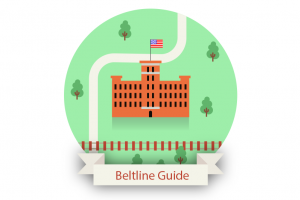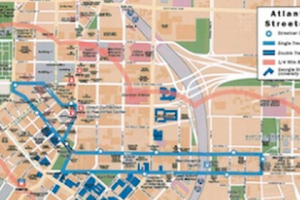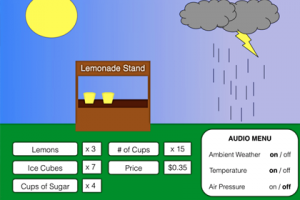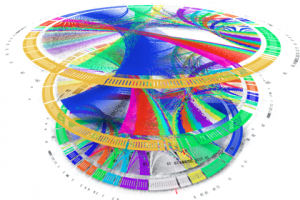|
Augmented Reality Testing Environment for Multiple Immersive Simulations |
We're using a revolutionary new approach to optimizing the process of order picking. Contrary to traditional methods, we want to use smart head-worn displays (HWDs) to enable our users to detect and correct errors during order picking in real-time, while freeing up most physical constraints and increasing throughput. |
ARToss is a multiplayer game built using Argon using a NodeJS web server with WebSockets. |
Asthma-nauts is a tablet based gamified interactive experience that seeks to engage and educate pediatric Asthma patients and their parents in Hospital Emergency Departments about management and control of the disease. The child is an Asthma-naut(astronaut) who explores an AR universe using a jetpack called the lung machine. Each planet is a module where the child learns about Asthma, it’s triggers, symptoms and treatment through educational videos. The lung machine is powered by knowledge, motivating the child to learn about Asthma to progress through the experience.  |
|
This educational toy concept helps teach children visual-spatial cognitive skills and logical-mathematical reasoning through interactive music creation. Build from LegoMindstorms, the project explores the tool's applications in early stage interactive concept development for designers.  |
The Beltline Exploration App is a proposed location-based "walking tour" application aimed at increasing community engagement and participation on the Atlanta Beltline. The existing Atlanta Beltline app provides a wealth of information that can be improved with a more participatory interaction from the user and an element of user content creation. The goal is for the app to bring awareness to art, culture, and events along portions of the Atlanta Beltline that will introduce newcomers to the Beltline and promote repeat visits to the Beltline.  |
The goal of the Atlanta Map Room is to document and reflect upon the connections and disjunctions between civic data and lived experience in the city, through the collaborative creation of large-scale, interpretive maps.  |
In our thesis project of the MS-HCI program, we are working with Atlanta’s Olmsted Linear Park Alliance on designing a mobile app that introduces the park to experienced and new park visitors. The app is built upon design research and evaluation with real end users like residents close to the park or interested in the Olmsted legacy. |
|
Software-defined networks (SDNs) are managed by a central controller that typically uses a separate, out-of-band network for control traffic. We are working on an intercontinental SDN, the AtlanticWave/SDX, and a secondary network connection would be very costly, so we have designed an in-band network control solution, and have generalized it for other SDNs to use. |
Many women played important roles in the Civil Rights Movement. Their efforts to lead the movement were often overshadowed by men, who still get more attention and credit for its successes in historical narratives. The motivation of the project is to design an engaging way that draws people's attention to women's achievements and helps people feel closer to the events and women that made history during the Civil Rights Movement. |
We are developing a suite of media experiences to introduce visitors to the rich cultural and economic history of Auburn Avenue. From about 1900 to 1960, Auburn Avenue was the center of African-American cultural and economic life in the city. The street also played a key role in the civil rights movement. From the 1960s on, the street suffered decline, and the local community disintegrated because of a range of social, economic, and urban planning factors.  |
This project helps teach STEM concepts with an audio-enabled version of the Lemonade Stand Game, in which visually impaired players (or any player that wants to experience a game that is sound dependent) need to manage their own stand while factoring in weather, local events, advertisement, and pricing in order to maximize profit for their business.  |
|
The graphs and figures that are so prevalent in math and science education make those topics largely inaccessible to blind students. We are working on auditory graphs that can represent equations and data to those who cannot see a visual graph. A number of new areas we're starting research on are: looking into teaching astronomy concepts through (like the Solar System) and the teaching and understanding of weather information through a combination of sonification and auditory description.  |
Before the onset of the pandemic, we used to be able to visit public places, like library and cafes, where we could work and enjoy the atmosphere of having others around. But then the pandemic hit, and with it came remote work where many were forced to work in isolation. Most of the face-to-face interactions we used to have were replaced with telecommunication, and many of us began to miss working around others. Enter: Audo, a sound-based virtual coworking space that features an auditory environment and user interface informed by two phases of user research.  |
Electronic sports, or esports, are not only an economic juggernaut but also an exciting domain to explore human-computer interactions and new business strategies. Team 1 of the Vertically Integrated Projects (VIP) class focuses on the applications of mixed reality technologies to bring the excitement of esports anywhere through mobile technologies and simple sensors. This team works with industry partners including Ghost Gaming, Atlanta Reign, and Hi-Rez Studios to explore new business strategies and applications of mixed reality through user-centered designed applications. Website: |


